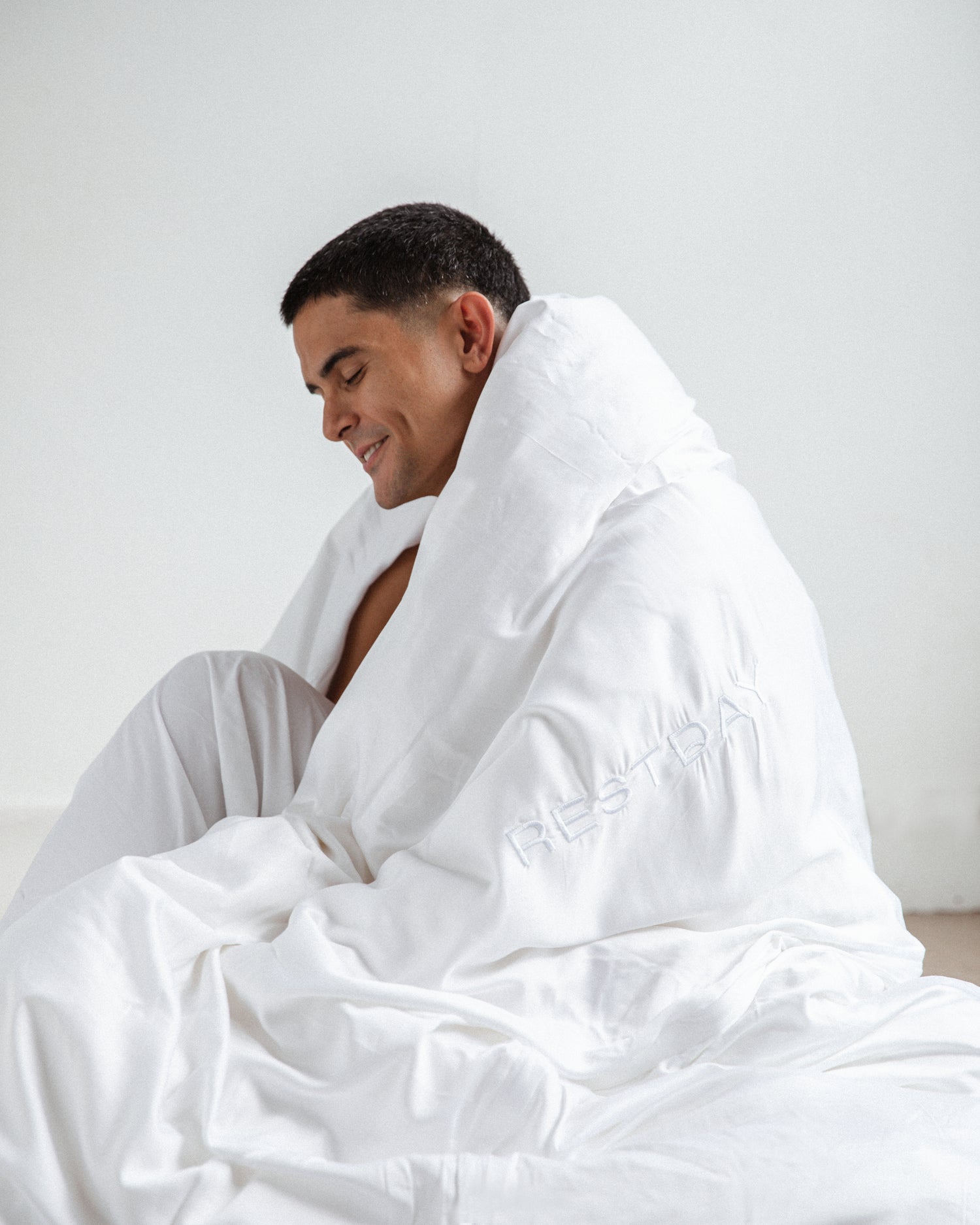
Should You Choose a Bamboo or Silk Pillowcase for Acne-Prone Skin?
Share
Struggling with acne that flares up overnight? The culprit might be right under your head — your pillowcase.
Below, we compare the benefits of bamboo pillowcases vs. silk pillowcases for people with acne-prone, oily, and sensitive skin.
We’ll unpack how each material interacts with skin oils, bacteria, and hair, helping you decide if a bamboo pillowcase** is a smarter investment than a silk pillowcase. Expect quick tips, expert insights, and visual breakdowns to guide your skincare-friendly bedding choice.
First, what exactly causes acne during sleep?
Many things interfere with your skin while you're sleeping, which is why you may find yourself waking up with new bumps in the morning.
This is because sweat, sebum, and bacteria can accumulate on pillowcases nightly. Dirty and synthetic fabrics can also trap oils and clog pores. Friction and heat from low-breathability materials can significantly irritate skin.
This begs the question, how can I prevent my skin from being compromised overnight by bacteria and sebum?
One of the greatest investments in preventing acne overnight is to invest in 100% natural fabric for your pillowcases. The best options in the current market include silk pillowcases or 100% bamboo pillowcases.
Bamboo Pillowcase vs Silk Pillowcase
Pros and Cons of silk pillowcase
There are many benefits of silk pillowcases, which include:
- A smooth surface reduces friction on skin and hair.
- Moisture-retaining: can trap skin oils and bacteria.
- Mulberry silk is the highest quality but costly.
- Not vegan; requires delicate washing.
See below the comparison tables for silk pillowcase vs bamboo pillowcase:
| Feature | Silk Pillowcase for Skin |
| Breathability | Moderate |
| Bacteria Resistance | Low |
| Absorption of oils | Low (retains moisture) |
| Friction reduction | High |
| Price | $$$ |
Pros and Cons of bamboo pillowcase
For bamboo pillowcases, the pros include:
- Naturally antibacterial and hypoallergenic.
- Moisture-wicking: pulls oil/sweat away from the skin.
- Breathable and cool — prevents pore-clogging heat.
- Machine-washable and more eco-friendly.
| Feature | Bamboo Pillowcase for Skin |
| Breathability | High |
| Bacteria Resistance | Very High |
| Absorption of oils | High (keeps skin dry) |
| Friction reduction | Moderate to High |
| Price | $$ |
Now that you can see the benefits of both pillowcases, let's do a side-by-side comparison to see which pillowcase is ideal for acne-prone, oily skin.
| Feature | Bamboo Pillowcase | Silk Pillowcase |
| Skin Benefits | Acne-preventing, breathable | Smooth on skin, can retain oils |
| Bacteria Resistance | Naturally antibacterial | Naturally antibacterial |
| Washing & Maintenance | Easy, machine washable | Hand wash only |
| Eco Friendliness | Highly sustainable and bio-degradable | Not sustainable |
| Cost | $$ | $$$ |
Now that you can cross-compare silk pillowcases with bamboo pillowcases, here are some further tips on what to look for when buying a pillowcase for acne-prone skin.
- Look for OEKO-TEX® certified, organic materials.
- Prioritise breathability and antibacterial features.
- Choose white to easily spot oil and dirt buildup.
- Avoid synthetic blends (like satin).
Frequently Asked Questions
Do pillowcases cause acne?
Yes. Pillowcases that trap oil, dirt, and bacteria can worsen acne, especially if not changed frequently.
Is bamboo or silk better for sensitive skin?
Bamboo is naturally hypoallergenic and moisture-wicking, making it ideal for sensitive skin.
What is mulberry silk and is it worth it?
Mulberry silk is a high-grade silk known for its smoothness. It's beneficial for reducing friction but not ideal for oily skin due to moisture retention.
Can satin pillowcases help with acne?
Satin is a weave, not a fiber. Most satin pillowcases are made from synthetic fibers, which are less breathable and not recommended for acne-prone skin.
Conclusion
When it comes to choosing between a silk pillowcase and a bamboo pillowcase for acne-prone, oily, and sensitive skin, the winner is clear: bamboo.
Its natural breathability, antibacterial properties, and moisture-wicking abilities make it a more effective solution for maintaining clear skin overnight. If you’re looking for a long-term investment that benefits both your skin and the planet, a white bamboo pillowcase might be your best bet.
Explore Restday's ultra-soft, dermatologist-approved bamboo pillowcases — made with 100% bamboo viscose and cooling properties that thermoregulate with your natural temperature.
 .
.
Restday Set of Two Pillowcases


